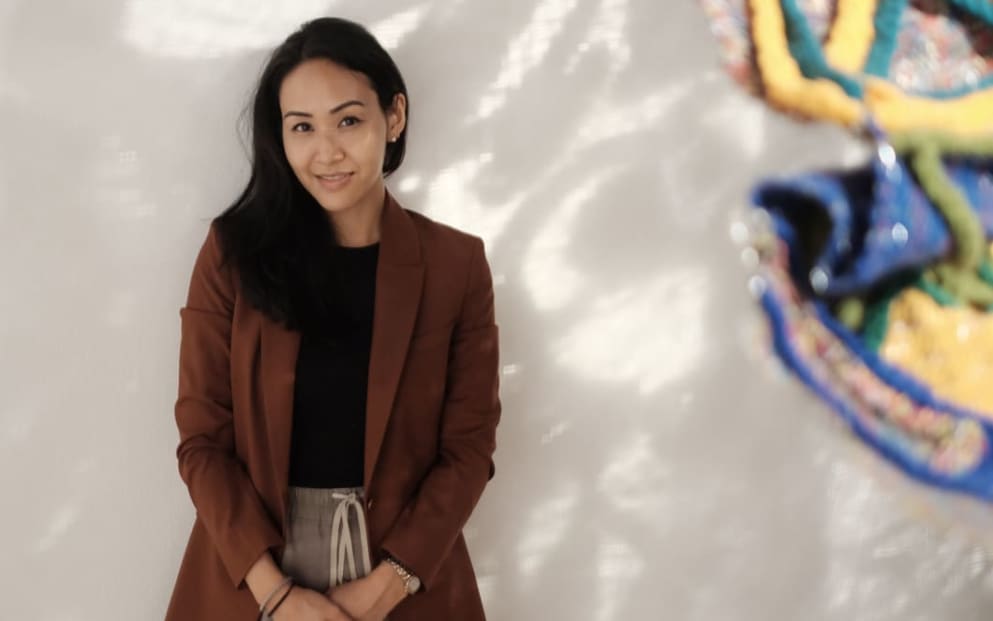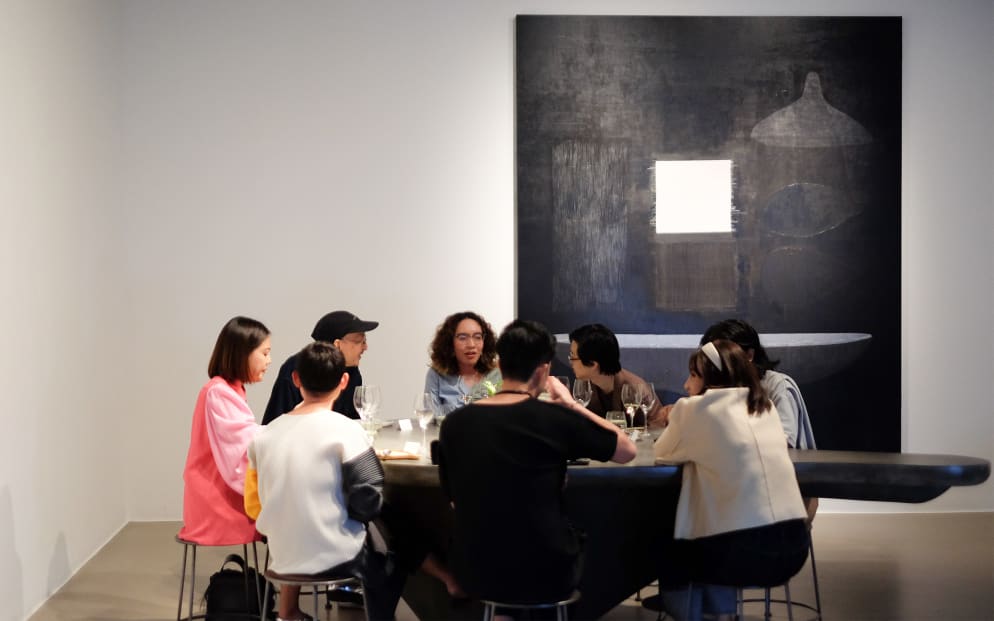In Bangkok, New Delhi, and Manila, gallerists are building networks that stretch from Kuala Lumpur to Tokyo – and don’t necessarily go through Beijing or Hong Kong
Ask most industry observers about the Asian art market, and you are more than likely to get an answer that focuses on China. And that makes sense: According to The Art Market 2021, authored by Dr. Clare McAndrew and presented by Art Basel and UBS, the country’s art sector accounted for 20% of the world’s estimated $50.1 billion art market.
However, as the Chinese art market matures, it is easier to see how its neighbors are making great strides of their own. Many smaller countries in Asia and South Asia host robust, even self-sustaining art ecosystems. Each is distinct in constitution, depending on not only histories of colonization and independence, but also favorable economic conditions. McAndrew’s report notes a 10% uptick in India of ultra high net worth individuals (UHNWIs) that mirrors a booming in interest in contemporary art. The Philippines has seen native talents achieve seven-figure sales at auction, while the Art Fair Philippines has become a regional magnet. And Thailand, with a rich tradition of devotional art, is also producing conceptual giants, such as Rirkrit Tiravanija and Korakrit Arunanondchai.
Who are the players behind these developing hubs, and how do they see their role within them? Asia’s Self-Sustaining Art Scenes, an Art Basel discussion to be held on Thursday, April 29, will solicit the views of three gallerists: Isa Lorenzo and Rachel Rillo, cofounders of Manila gallery Silverlens; Sutima Sucharitakul, founder of Nova Contemporary, Bangkok; and Roshini Vadehra of Vadehra Art Gallery, New Delhi. It will be hosted by Shelly Wu, of Taipei gallery TKG+. Ahead of the panel, we spoke with each of these gallerists to learn about their countries’ vibrant art scenes.
Whereas China has taken an active role in cultivating the country’s art industry – supporting the development of gallery districts and creating conducive tax structures, for example – India’s government has chosen a hands-off approach. For this reason, dealers, collectors, and patrons have taken the lead in shaping the nation’s art scene. According to Roshini, when her father, Arun, founded Vadehra Art Gallery in 1987, ‘There was no art fair, there were no biennales, and auction houses had not started looking to India yet.’ In fact, the business grew out of Vadehra père’s work helping Taj Hotels acquire art to decorate its properties; it later came to represent several generations of Indian artists, from M.F. Husain and Arpita Singh to Atul Dodiya and Zakkir Hussain.
Vadehra exemplifies some of the key developments of the Indian scene over the years. Arun lobbied Christie’s to establish dedicated sales of Indian Modernists in the 1990s, and within a decade, an Indian artwork broke $1 million at auction. He also spearheaded collaboration between the public and private sectors, organizing retrospectives with the government-run National Gallery of Modern Art (NGMA). ‘At the time, the NGMA wouldn’t show living artists,’ Roshini says. ‘My father told them, “This rule makes no sense. There are artists here who deserve to be shown at major institutions.”’ In the 1990s, Vadehra Art Gallery launched a publishing imprint, and in 2007, it established the Foundation for Indian Contemporary Art, which supports contemporary artistic production through a membership program. Today, Vadehra and other galleries are banding together for higher-profile events such as the India Art Fair, which, since its debut in 2008, has grown to attract some 146,000 visitors annually, and the Kochi-Muziris Biennale, today Asia’s biggest festival of contemporary art.
Previously, a coterie of top-level collectors, such as Kiran Nadar, the founder of the country’s first private museum, led the way, but according to Roshini, the recent progress is to be credited to her own generation. ‘When I joined the gallery in 2004, younger people started to get more interested in collecting,’ she says. ‘[They] were traveling to Basel and to Frieze, where they were introduced to the concept of buying art.’ Traditionally, many Indians live with their extended families, but ‘people in my generation have started building their own homes,’ notes Roshini. ‘The architects and interior designers they hire have started playing a real role in encouraging people to collect.’
In the Philippines, too, youth has set the tone for its creative scene. In 2020, Lorenzo and her Silverlens cofounder Rachel Rillo earned a spot on the ArtReview Power 100 for their work to promote the visibility of Filipino and diaspora artists, such as Pacita Abad, through her estate, as well as Maria Taniguchi (winner of the Hugo Boss Asia Art award in 2015) and Martha Atienza (shortlisted for the Benesse Prize in 2016). Theirs is a city of some 15 million, with a very young populace: 80% are younger than 50, and 60% are below 30.
‘That means there’s a lot of energy,’ Lorenzo says. ‘Because we have a history that’s steeped in religious iconography and Hollywood, we like to decorate. Everyone has an aesthetic – whether good taste or bad, everyone has taste – so everyone likes looking at and buying art.’ The collector base is multigenerational, she points out, and ranges from seasoned collectors to shoppers looking for something to go with the furniture. And, she says, ‘That is not a bad thing.’
When they established Silverlens in 2004, says Lorenzo, most Philippine galleries were tiny storefronts situated in shopping malls. Silverlens spearheaded a shift to warehouse-style spaces to accommodate more-ambitious projects, and instituted more professional practices, such as artist contracts. Since then, numerous galleries have supplemented the city’s institutions, which range from the Metropolitan Museum of Manila (established in 1976) to younger foundations such as Bellas Artes Projects, founded in 2013 and focused on interdisciplinary collaboration. Existing players are also looking to foster the growth of crucial new parts of the ecosystem: for example, the prominent Ateneo Art Awards recently introduced a new category for art criticism. Up-and-coming curators, meanwhile, are cutting their teeth on shows supported by institutions including the Japan Foundation and the Goethe-Institut.
Lorenzo and Rillo have also worked to establish a thriving network by connecting with galleries throughout Southeast Asia, from Indonesia, Taiwan, and Hong Kong to Singapore and Malaysia, with the galleries often inviting artists from each other’s rosters to mount shows. In this way, participants have been able to grow their audiences across the region. ‘We’re never going to be a mega-gallery, and who wants to be?’ says Lorenzo. ‘It’s an easier and much more fun way of doing things if we all hold hands.’

One of their collaborators is Nova Contemporary, founded just five years ago by Sucharitakul. Her gallery finds its home in a thriving megalopolis of 11 million, with a flourishing contemporary scene: some 70 galleries participated in the most recent edition of Bangkok Galleries’ Night, and the country has seen several private museums, such as the Jim Thompson Art Center, spring up.
After interning at New York’s Metropolitan Museum of Art, Sucharitakul traveled to hubs including Shanghai, Taiwan, and Tokyo, ‘to understand what Thailand needed’. For her first few years, she worked with international artists, both emerging and established – sometimes Chinese or Western artists, in order to lure in collectors familiar with better-known names – but now she has narrowed her program to mostly Southeast Asian artists. ‘There are so many talented artists in Thailand who are overlooked,’ she says. ‘There haven’t been enough international galleries to support production costs or help maintain their studios.’

Because Thailand was never colonized, Sucharitakul says, its collectors previously mainly focused on traditional crafts or easily digested Pop Art. She felt it her duty to begin to introduce artists from elsewhere in Asia, who are often subject to prejudice in Thailand, and to show more conceptual work. In this way, she set a high bar for cultivating a base of collectors – some of whom, she notes with pride, have bought their first editions or video artworks through her. ‘That is what makes me happiest,’ she says. By showing artists such as Cambodia’s Khvay Samnang, a veteran of Documenta, she was able to educate her collectors, some of whom had never heard of such shows, about the concept of international biennials.
The pandemic has offered her a silver lining for the local market, too. Some Bangkok-based buyers accustomed to doing cross-border business with Hauser & Wirth or Gagosian have, in lockdown, allowed Sucharitakul to introduce them to the virtues of more experimental works. And older, established Thai artists, she notes, ‘were kind enough to give me a chance by showing at my gallery.
‘When you’re working with different generations, they learn from each other. That’s how we can support the ecosystem.’
